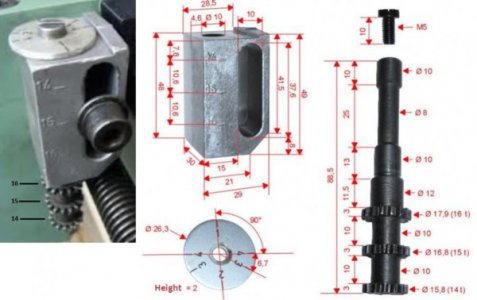- Joined
- Mar 22, 2013
- Messages
- 497
Yes you can cut any thread you want, but on an Inch machine, you can not use a thread dial for Metric threads. This is not just on this specific machine, it is on ANY machine out there, no matter if it costs $1000, or $30,000. It is just the way the math works out. Other than once I actually did see a lathe that had a thread dial with a gearbox on it, and you could work it out and use it for metric and inch threads, but it was so complicated, its just easier to leave the half nuts engaged when doing metric. Once you do it a few times, it is not hard at all.


